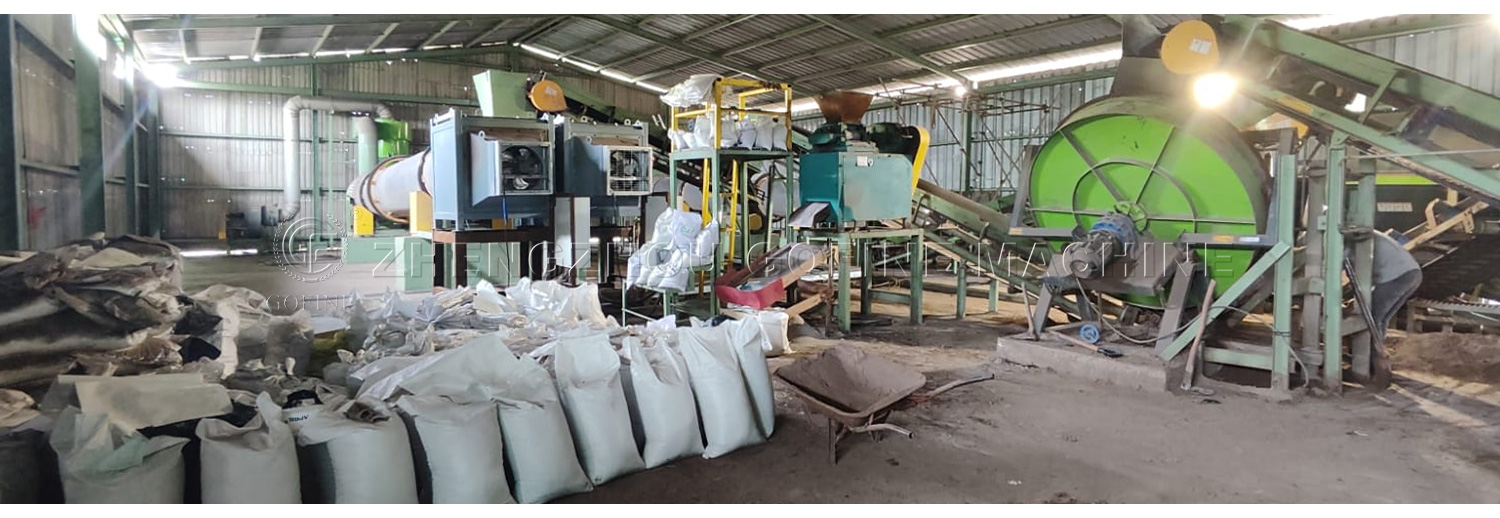
Bone Meal Fertilizer Granulation Production Line
2025-04-25Introduction
According to research data, bone meal fertilizer has become a widely used organic nutrient source. Bone meal is rich in phosphorus and calcium, which can improve soil health and promote root development. However, to convert raw bone meal into marketable granular fertilizer, a professional bone meal fertilizer granulation production line is required.
How to set up a complete bone meal fertilizer production line and what preparations need to be made? Next, I will explain it to you in detail.
What Is Bone Meal Fertilizer?
Bone meal is a natural fertilizer derived from animal bones, processed into fine powder or granules. It is slow-releasing, making it ideal for long-term soil enrichment. Typically used in organic farming, it’s valued for its high phosphorus content (P) and trace elements.

Bone Meal Fertilizer Granulation Process Flow
A modern bone meal fertilizer production line includes several key stages to ensure high-quality, uniform granules:
1. Raw Material Preprocessing
Crushing: Large bones are crushed into fine powder using a bone crusher.
Sterilization: Raw bone meal is sterilized to eliminate pathogens and ensure safety.
Drying: Moisture content is reduced to optimal levels with a rotary drying machine.
2. Mixing and Composting
Bone meal may be blended with other organic materials (e.g., manure, compost) to balance nutrients.
Optional fermentation step to enhance microbial activity.
3. Granulation
The heart of the production line. Bone meal powder is processed in a granulator.
Common granulation machines: disc granulator, rotary drum granulator, or double roller extrusion granulator.
Binders may be added to improve granule cohesion.
4. Drying and Cooling
Granules are dried again to remove excess moisture.
A cooling system ensures granules are hardened and ready for packaging.
5. Screening and Packaging
A rotary screening machine removes oversized or undersized granules.
Final product is packaged in bags for storage or distribution.
Preparation Steps for Setting Up a Bone Meal Fertilizer Production Line
Before launching your fertilizer plant, proper planning is critical. Here’s what you need to do:
1. Market Analysis
Identify demand for organic fertilizers in your region.
Consider competition and potential buyers (farmers, distributors, wholesalers).
2. Raw Material Sourcing
Secure a stable supply of animal bones or pre-ground bone powder.
Build partnerships with slaughterhouses, meat processors, or rendering plants.
3. Site Selection and Layout Design
Choose a location that meets environmental regulations.
Plan for wastewater treatment, odor control, and logistics access.
4. Equipment Selection
Choose the right machines based on capacity needs and budget.
Work with a trusted manufacturer who offers custom production line design, installation, and technical support.
5. Regulatory Compliance
Obtain necessary licenses and environmental permits.
Ensure compliance with organic certification standards if required.
6. Cost Estimation and ROI Planning
Budget for machinery, land, labor, utilities, and maintenance.
Create a financial model to project return on investment.

Whether you are starting from scratch or upgrading existing equipment, Gofine can provide you with a full set of solutions and equipment, as well as pre-sales and after-sales services. Help your bone meal fertilizer granulation project run smoothly.
If you are interested in opening your own bone meal fertilizer plant, contact us now to get customized production line design, equipment quotation and technical consulting services.


